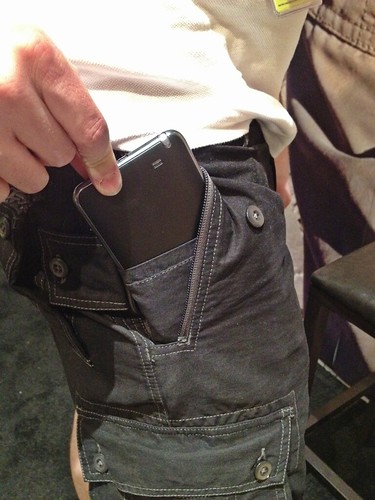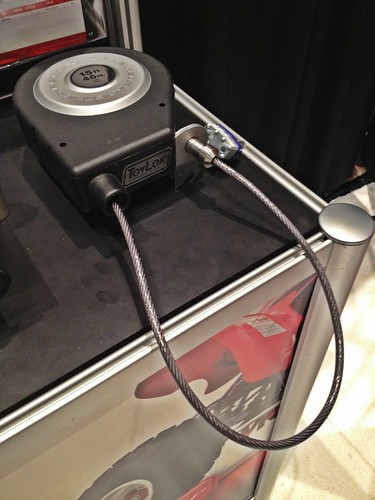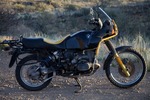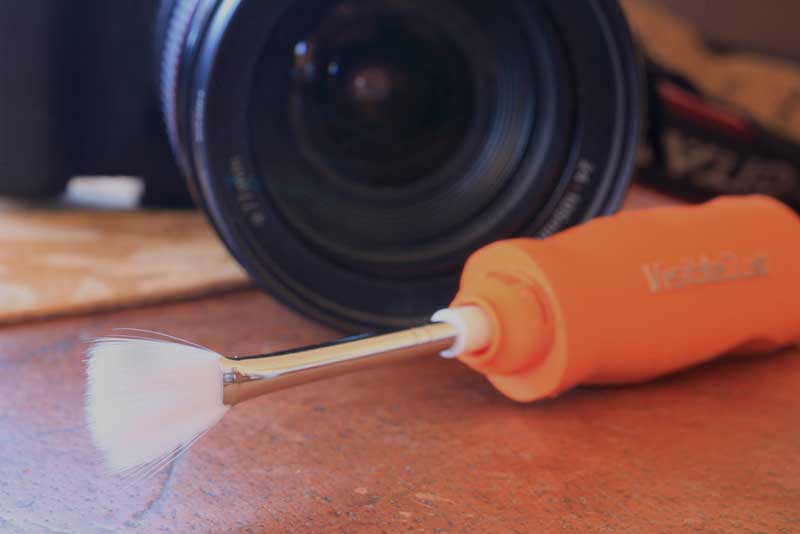
Overland Tech and Travel
Advice from the world's
most experienced overlanders
tests, reviews, opinion, and more
Outdoor Retailer, day 3—security
Securing our gear (or your wallet and passport) is always top on our mind, whether locking up to go on a hike at Grand Canyon or shopping for produce in Congo. Here are few security accessories we spotted at the show:
 P^cubed pants (pickpocket-proof) have multiple layers of security, from super tough fabric and thread to triple layer pocket openings. From Clothing Arts.
P^cubed pants (pickpocket-proof) have multiple layers of security, from super tough fabric and thread to triple layer pocket openings. From Clothing Arts.
 Banner at the Clothing Arts booth explaining the P^cubed pants.
Banner at the Clothing Arts booth explaining the P^cubed pants.
 TravelOn's security purses look like a good alternative if you need to carry a shoulder bag. Each has a steel-wire net incorporated, and slash-proof strap. A cross-body carry is recommended to avoid snatch-and-run, obviously.
TravelOn's security purses look like a good alternative if you need to carry a shoulder bag. Each has a steel-wire net incorporated, and slash-proof strap. A cross-body carry is recommended to avoid snatch-and-run, obviously.
 ToyLok's retractable-cable steel lock can be secured to your vehicle and easily deployed to lock bikes or boats. They are considering a smaller version for motorcycles.
ToyLok's retractable-cable steel lock can be secured to your vehicle and easily deployed to lock bikes or boats. They are considering a smaller version for motorcycles.
Insuring an older vehicle for overlanding outside the U.S.

Like you, I have an older vehicle that I've put a newer diesel engine in, and am hesitant to drive to Mexico without being able to get full coverage (ideally, an agreed amount policy). It seems that most companies that sell Mexican auto insurance (e.g., Sanborn's) won't provide full coverage for a vehicle older than 10 years (for some companies, 15). I'd like to drive my Land Rover to Mexico, but not if I can't get full coverage for it (not just liability). Any suggestions or advice (other than buy a cheap, newer vehicle)? Thanks.
We sold our FJ60 recently and are looking for a diesel pickup on which we'll put a Four Wheel Camper, so perhaps if we have Tom Hanagan at FWC plumb a toilet and make it a pass-through (which we'd like), we can qualify for better insurance.
No poseur machine: Tiffany Coates' R80GS, Thelma
 When legendary motorcycle world traveler Tiffany Coates was in the U.S. for a speaking tour in 2010, BMW Motorrad USA offered to pay for parts and repairs on her 20-year-old R80GS, Thelma, which by then had carried her well over 150,000 miles on five continents.
When legendary motorcycle world traveler Tiffany Coates was in the U.S. for a speaking tour in 2010, BMW Motorrad USA offered to pay for parts and repairs on her 20-year-old R80GS, Thelma, which by then had carried her well over 150,000 miles on five continents.
When Tiffany told her father the good news, his response was, “Bloody hell—had they seen the bike when they offered that?”
 When legendary motorcycle world traveler Tiffany Coates was in the U.S. for a speaking tour in 2010, BMW Motorrad USA offered to pay for parts and repairs on her 20-year-old R80GS, Thelma, which by then had carried her well over 150,000 miles on five continents (TiffanysTravels.co.uk).
When legendary motorcycle world traveler Tiffany Coates was in the U.S. for a speaking tour in 2010, BMW Motorrad USA offered to pay for parts and repairs on her 20-year-old R80GS, Thelma, which by then had carried her well over 150,000 miles on five continents (TiffanysTravels.co.uk).
When Tiffany told her father the good news, his response was, “Bloody hell—had they seen the bike when they offered that?”
Indeed. A close (i.e. anything nearer than 50 feet) inspection of Thelma indicates that Tiffany pays diligent attention to the mechanical aspects of the bike, and pretty much files aesthetics under “patina.” A good third of the bumblebee yellow paint on the front guard seems to have been left in flakes in foreign countries, and various scrapes, gouges, blobs of third-world welds, and fraying wraps of duct tape attest to the drops and general wear unavoidable in the course of accumulating the spectacular CV of this motorcycle and its rider.
Tiffany will be at the 2012 Overland Expo, teaching classes in personal safety for women, contributing to regional travel forums and experts panels, and presenting a talk and slide show on central Asia.
Meanwhile, here’s a close look at Thelma, who’s been enjoying a break parked at the Overland Expo headquarters outside Tucson. If you haven’t yet seen Tiffany’s BMW Unscripted video clip, watch it here: http://www.youtube.com/watch?v=XAUhV1r-kUo
 A bit of road wear is apparent on the lamp guard
A bit of road wear is apparent on the lamp guard Crash bars have some stories to tellThe modifications to Thelma are scant. Besides the much-repaired hard luggage mounts, here’s a comfortable Bill Mayer saddle, a custom Wilbers Suspension rear spring and shock, and, well . . . that’s about it.
Crash bars have some stories to tellThe modifications to Thelma are scant. Besides the much-repaired hard luggage mounts, here’s a comfortable Bill Mayer saddle, a custom Wilbers Suspension rear spring and shock, and, well . . . that’s about it.
 Running gear is virtually stock
Running gear is virtually stock Single non-vented disc brake in front, drum in rear
Single non-vented disc brake in front, drum in rear
 Hey, it still blinks . . .
Hey, it still blinks . . .
 Underside shows the effects of 200,000 overland miles
Underside shows the effects of 200,000 overland miles Weld repairs would give a German engineer nightmares
Weld repairs would give a German engineer nightmares But Mickey seems happy to ride along . . .
But Mickey seems happy to ride along . . .
Vehicle rentals in New Zealand?
My wife and I are headed to New Zealand in March and I wanted to see if you knew of anybody down there who did vehicle rentals? We are looking at renting a pop-top camper van to spend our 2 weeks traveling around the south island. Any leads would be helpful! Thank you for your help.
~ Beau Johnston (www.LivingOverland.com Gourmet Cooking * Travel * 4WD) via email
How do I find information for shipping a bike or vehicle overseas?
What are some resources for someone wanting to ship a Jeep overseas, such as China or Australia?
- David T., USA (via email)
Overland travel: Genetically modified anti-malarial mosquitoes closer to viability for release into the wild
 It’s been over a decade since scientists created a mosquito genetically modified so its ability to transmit malaria—which kills 750,000 people each year worldwide, mostly in Africa—was virtually eliminated. But so far the anti-malarial GM mosquitoes have not been introduced into the wild, because the modification carries no definite survival advantage and would likely simply fade out of the wild population over time.
It’s been over a decade since scientists created a mosquito genetically modified so its ability to transmit malaria—which kills 750,000 people each year worldwide, mostly in Africa—was virtually eliminated. But so far the anti-malarial GM mosquitoes have not been introduced into the wild, because the modification carries no definite survival advantage and would likely simply fade out of the wild population over time.
That may have just changed.
 It’s been over a decade since scientists created a mosquito genetically modified so its ability to transmit malaria—which kills 750,000 people each year worldwide, mostly in Africa—was virtually eliminated. But so far the anti-malarial GM mosquitoes have not been introduced into the wild, because the modification carries no definite survival advantage and would likely simply fade out of the wild population over time.
It’s been over a decade since scientists created a mosquito genetically modified so its ability to transmit malaria—which kills 750,000 people each year worldwide, mostly in Africa—was virtually eliminated. But so far the anti-malarial GM mosquitoes have not been introduced into the wild, because the modification carries no definite survival advantage and would likely simply fade out of the wild population over time.
That may have just changed.
The eukaryotic protist Plasmodium that causes malaria has proven fiendishly adept at evolving resistance to drug after drug designed to prevent the sickness in humans. Even Lariam (mefloquine hydrochloride), the potent prophylactic known to cause rare but serious neuropsychiatric side effects (not to mention cardiac arrhythmia), is showing signs of reduced efficacy. Of course if one minimizes getting bitten by mosquitoes in the first place the risks of contracting the disease go down. But while avoidance strategies such as bed nets, protective clothing, and insect repellent help, they are not 100 percent effective, nor are they often available to poor people in malarial regions. Residential application of pesticide has been shown to be effective, and there is a campaign to re-approve DDT for this purpose, as its risks in small amounts are far lower than the risk from malaria (the huge environmental problems caused by DDT in the 1950s and 1960s resulted from mass aerial sprayings over farmland, not residential use). But, again, pesticides cannot eliminate the possibility of being bitten.
What if we could skip drugs, bed nets, and pesticides altogether and create a mosquito that was incapable of transmitting malaria?
That was accomplished in 2000 at Imperial College London. But being unable to transmit malaria has a neutral effect on the mosquito—it adds no survival advantage except in a few rare situations, so if such a population were released into the wild, the modified gene would probably disappear over time.
Now scientists at ICL have figured out a way to make the modification spread through a wild population, using something called a homing endonuclease gene, which can make a copy of itself, ensuring that all offspring wind up with a copy as well. When the researchers introduced the HEG into one percent of a sample mosquito population, they found that in just 12 generations (each generation requires about 20 days), the gene had spread through half the population.
So—we’re not leaving the Off! home just yet, but we’ll follow these developments with interest.
Link to the article on SciDev.net:
http://www.scidev.net/en/news/survival-prospects-boosted-for-antimalarial-mosquitoes-.html
And, if you really want the full story, the report in Nature:
http://www.nature.com/nature/journal/v473/n7346/full/nature09937.html
Equipment review: Arctic Butterfly sensor-cleaning brush

A few weeks ago I received an unexpected Royal Mail package from Tom Sheppard. Inside was an orange case the right size to contain a pen or a watch.
Hmm . . . Had Tom decided to pass on to me his GMT Master?
Probably not.

A few weeks ago I received an unexpected Royal Mail package from Tom Sheppard. Inside was an orange case the right size to contain a pen or a watch.
Hmm . . . Had Tom decided to pass on to me his GMT Master?
Probably not.
What Tom had sent me was not a Rolex, but something nearly as useful if one were on a trip of a lifetime and interested in bringing home digital images free of those nasty little dark blots caused by dust on the camera’s sensor. The amusingly named Arctic Butterfly sensor brush, from a company called Visible Dust, uses the principles of static charging to enhance the ability of its bristles to lift off minute debris from a digital camera’s sensor (or, more correctly, the filter that covers the actual sensor).
Many cameras these days are equipped with so-called self-cleaning sensors, which use vibration to literally shake dust particles off the surface. But those particles are obviously still in the camera—one can almost imagine a tiny dust dune growing slowly under the sensor on a long off-pavement journey. Unlikely perhaps; nevertheless, while self-cleaning sensors help, they don’t remove dust from the sensor chamber, and they don’t shake off the more stubborn particles.
For those clingy bits, and for all our cameras that don’t have the self-cleaning feature, the standard approach of a filtered bulb blower followed by a sensor swab moistened with cleaning solution works superbly. However, if the blower misses a hard bit which subsequently gets trapped under the edge of the swab, the result can be a scratched sensor. I’ve also used the Delkin Sensor Vac—literally a miniature Hoover—with very good results, but even it usually required followup with a swab for complete cleaning.
Operation of the Arctic Butterfly brush is simple. Set your camera on ‘sensor clean’ to lock up the mirror. Hold the brush away from the camera and hit the power button three times for a few seconds each time. This spins the brush rapidly, ejecting any debris in the bristles and enhancing their static attractiveness. Switch off, then gently swipe the brush just once across the sensor, trying hard not to brush the sensor chamber or other parts of the camera, which could have lubricant residue on them. Do not spin the brush while it’s in contact with the sensor (I wonder how many males who don’t read instructions have assumed the wrong thing here?).
That’s it. You can check the sensor for dust by pointing your camera at a white wall, stopping down the lens all the way, making sure the wall is out of focus, then taking a shot. Camera shake won’t affect the results, since what you’re looking for is moving with the camera. Examine the image in Photoshop or another program. Or use a commercially available optic such as Visible Dust’s ‘Quasar’ sensor loupe, or Delkin’s SensorScope, to examine the sensor directly.
I found the Arctic Butterfly to be very effective, as evidenced by pre- and post-brush inspection, and it’s probably more so in a dry environment such as our southwestern deserts or Tom’s Sahara. In fact, combined with a good, filter-equipped bulb blower, I think this is all one would need to guarantee virtually spot-free images for the duration of most trips. Eliminating the swabs means you don’t have to worry about sourcing sensor-cleaning fluid at your destination (since it’s generally prohibited on airlines). In its padded case the brush weighs just 4.8 ounces; on its own it’s only 2.1 ounces. Cheap, lightweight trip insurance for your images. Thanks to Tom Sheppard for alerting me to a good product I’d somehow missed.
Now, Tom—about that beat-up old watch of yours . . .
What is the safest way to carry enough water for an extended trip?
For years I've been getting by with using the big plastic water containers from Reliance. But now that I'm planning an extended trip into Baja this fall, I thought I'd better get a jump on better options. Any thoughts on the safest way to carry enough water for an extended trip?
- Tony in Los Angeles, via Twitter
Hint: When using “Search,” if nothing comes up, reload the page, this usually works. Also, our “Comment” button is on strike thanks to Squarespace, which is proving to be difficult to use! Please email me with comments!
Overland Tech & Travel brings you in-depth overland equipment tests, reviews, news, travel tips, & stories from the best overlanding experts on the planet. Follow or subscribe (below) to keep up to date.
Have a question for Jonathan? Send him an email [click here].
SUBSCRIBE
CLICK HERE to subscribe to Jonathan’s email list; we send once or twice a month, usually Sunday morning for your weekend reading pleasure.
Overland Tech and Travel is curated by Jonathan Hanson, co-founder and former co-owner of the Overland Expo. Jonathan segued from a misspent youth almost directly into a misspent adulthood, cleverly sidestepping any chance of a normal career track or a secure retirement by becoming a freelance writer, working for Outside, National Geographic Adventure, and nearly two dozen other publications. He co-founded Overland Journal in 2007 and was its executive editor until 2011, when he left and sold his shares in the company. His travels encompass explorations on land and sea on six continents, by foot, bicycle, sea kayak, motorcycle, and four-wheel-drive vehicle. He has published a dozen books, several with his wife, Roseann Hanson, gaining several obscure non-cash awards along the way, and is the co-author of the fourth edition of Tom Sheppard's overlanding bible, the Vehicle-dependent Expedition Guide.



